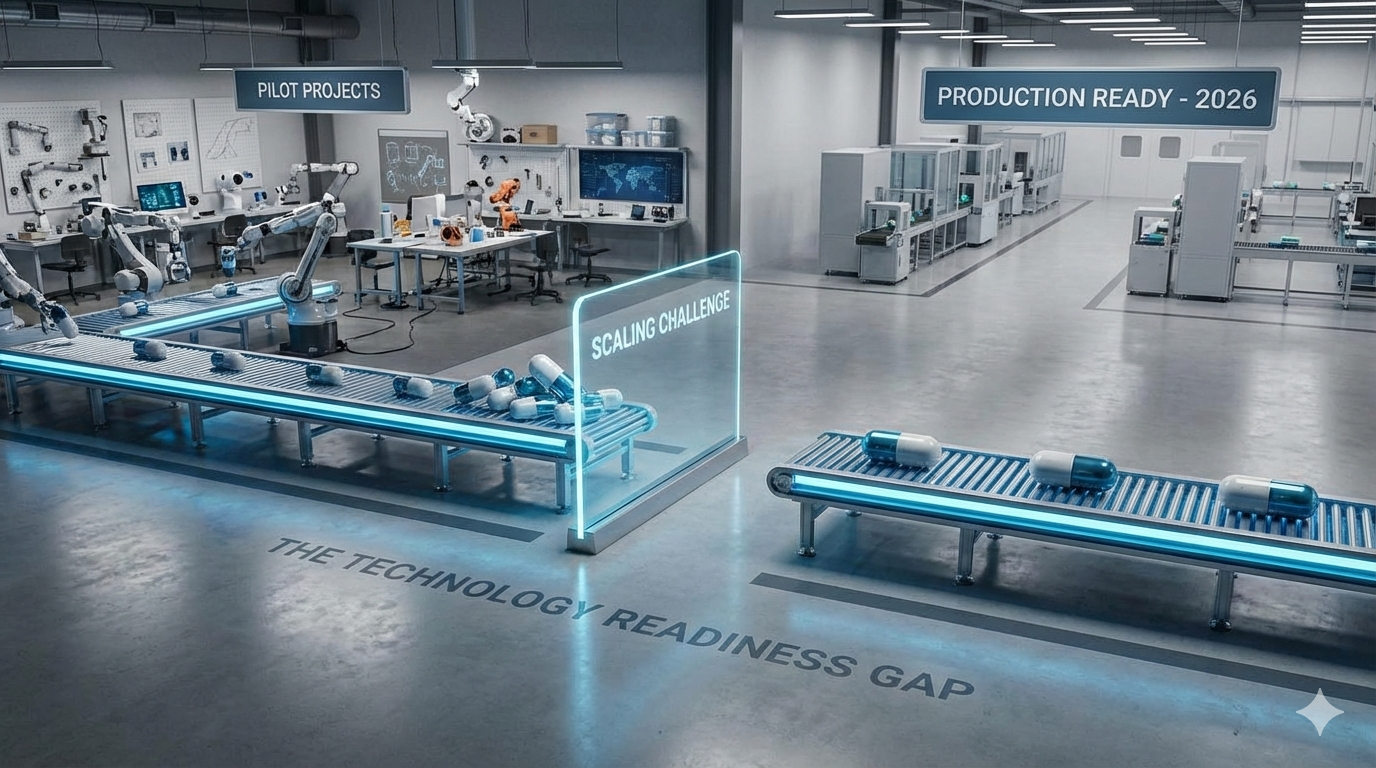In light of the recent Apple Vision Pro release, it's an excellent time to explore the applications of Augmented Reality (AR) and Virtual Reality (VR) for enterprises. If the Apple Vision Pro can be seamlessly integrated with the existing Apple ecosystem (like iPads, iPhones, Macs), it would mean businesses already operating within this ecosystem can more easily adopt and integrate this technology. Once sci-fi reserved technologies are now innovating business operations, enabling unique ways to visualize and engage with data, people, and environments. This post looks at the top ten uses of AR and VR in today's enterprises, hints at emerging trends, and predicts their future applications.
1. AR and VR in Training & Development
AR and VR have found a substantial foothold in the field of enterprise training and development. From improving soft skills via virtual role-plays to providing technical training such as aircraft piloting or surgical procedures, these immersive technologies provide a controlled, safe, and replicable environment for practice.
2. AR and VR in Design and Prototyping
AR and VR speed up and streamline product design and prototyping processes. They offer a shared space where engineers and designers can collaboratively work on virtual models, apply real-time changes, and immediately see the outcomes in 3D.
3. Virtual Meetings with AR and VR
With the rise of remote work, AR and VR-powered virtual meetings are becoming a viable alternative to traditional video conferencing. These virtual spaces simulate the presence of remote colleagues in the same room, ensuring an immersive and engaging experience.
4. Remote Assistance using AR
AR has proved highly effective in offering remote assistance. For instance, an on-site technician can share their perspective with a remote expert, who can then guide the technician through complex procedures by overlaying digital instructions onto the physical environment.
5. AR and VR in Retail and E-commerce
AR and VR are revolutionizing the retail sector. Virtual showrooms enable customers to explore products in a 3D space, while AR allows customers to visualize products such as furniture in their actual environment.
6. AR and VR in Real Estate and Architecture
In real estate and architecture, VR provides clients with the opportunity to experience spaces before they are physically built or personally visited. AR enhances this by overlaying digital enhancements like furniture layouts or structural modifications onto physical spaces.
7. AR and VR in Healthcare
AR and VR show significant potential in healthcare. AR-assisted surgeries enable surgeons to overlay digital images onto the patient, while VR-based therapies cater to various mental health conditions. These technologies are refining healthcare, making it more precise and patient-centric.
8. Marketing and Advertising with AR and VR
AR and VR provide unique ways to engage consumers through immersive brand experiences and interactive advertising. Several companies are developing AR apps, enabling users to interact with products or branded content in new, engaging ways.
9. Data Visualization using AR and VR
AR and VR provide solutions for interpreting complex data that can be challenging to comprehend in traditional 2D formats. They create immersive, 3D data visualizations, simplifying the identification of patterns, understanding trends, and making informed decisions.
10. Supply Chain Management with AR and VR
AR and VR can optimize various processes in supply chain management. For instance, these technologies can overlay digital instructions and navigation onto real-world environments for warehouse picking, packing, and training, thereby enhancing efficiency and reducing errors.
Future Trends and Applications of AR and VR
We foresee AR and VR being adopted in even more industries and applications in the future. For example, in education, immersive technologies could offer students virtual field trips, allowing them to explore different locations, cultures, and historical periods in an engaging way. In tourism, AR could overlay digital information onto tourist attractions,
Startups to keep an eye on in the AR EcoSystem:
let's shine a light on some startups in the AR, VR, and AI space that are worth watching as of mid-2023:
- Spatial: Spatial uses AR and VR to create 3D workspaces that enable remote collaboration. Leveraging AI, Spatial can convert 2D images into 3D avatars for a more immersive and personalized meeting experience.
- 6D.ai: Acquired by Niantic, the company behind Pokémon GO, 6D.ai has developed a 3D mapping engine using smartphone cameras, creating an AR cloud. This technology allows AR devices to understand and interact with the real world, opening up new possibilities for AR applications.
- Blippar: Blippar, a UK-based startup, offers an AR creation and publishing platform. It integrates AI for real-time object recognition, pushing interactivity to a new level.
- Fyusion: This San Francisco-based startup combines AI and AR for visual understanding, allowing users to capture and display 3D images. Its applications span from e-commerce and automotive to insurance and field services.
- EchoAR: EchoAR provides a cloud platform for AR and VR that uses AI to optimize performance and data. The platform is designed to be easy to use, helping developers and businesses build better AR/VR applications.
- Resonai: Resonai is transforming buildings into intelligent digital spaces. By combining AR and AI, they can digitize building infrastructure, enhancing experiences for facilities management, security, and mobile applications.
- Varjo: Varjo, a startup based in Helsinki, Finland, is focused on creating high-resolution VR and XR (mixed reality) products for professional use. Their technology aims to allow seamless integration between real and virtual worlds.
These companies represent a small portion of the AR, VR, and AI startup scene, but they showcase the potential and diversity in this fast-evolving field. Given the wide array of applications and the rapid advancement of technology, we can expect many innovative developments from this sector in the coming years.
Augmented Reality (AR), Virtual Reality (VR), and Artificial Intelligence (AI) are not just futuristic concepts or technologies limited to gaming and entertainment. They are here today, rapidly transforming the way we work, live, and interact with the world.
From facilitating training and development in a controlled, virtual environment to revolutionizing design, prototyping, and remote meetings, AR and VR have proven their value in enterprise. The integration of AI has only magnified their impact, enabling personalized, interactive, and insightful experiences across industries, be it healthcare, retail, real estate, or supply chain management.
Emerging startups like Spatial, 6D.ai, Blippar, Fyusion, EchoAR, Resonai, and Varjo combined with Apple Vision Pro release are pushing the boundaries of these technologies, developing innovative applications and shaping the future of AR, VR, and AI. Their work not only reflects the enormous potential of these technologies but also hints at the myriad possibilities we can expect to see in the coming years.
As we move forward, it's evident that these technologies will become increasingly ingrained in our everyday lives and work, making processes more efficient, experiences more immersive, and information more accessible. The future of AR, VR, and AI is bright, and it's a future that we should watch with anticipation and excitement.
How can Traction Technology help?
Traction Technology is a ground-breaking platform engineered expressly to eliminate internal innovation silos, thereby enabling enterprises to seamlessly collaborate and align their business needs with promising technologies. By providing dynamic features that promote collaboration and innovation, they aim to accelerate digital transformation in the enterprise.
Here's how Traction Technology can help:
.png)
Discovery of Relevant Startups: Traction Technology helps established companies discover relevant advanced technologies such as AR /VR aligned with their strategic goals and innovation areas. It curates startups based on different industries, technology trends, and areas of business interest, making it easier to find potential partners or investment opportunities and share this information across the enterprise.
Collaboration and Engagement Tools: Traction Technology offers tools that help manage the engagement process with startups. It provides a structured approach to evaluating, tracking, and managing interactions with multiple startups across multiple project and pilots, improving efficiency and collaboration.
Data-Driven Insights: The platform provides data-driven insights to help make informed decisions. This includes information on startup funding, growth indicators, customers and competitors, which can help in assessing potential startup partnerships.
Innovation Pipeline Management: Traction Technology aids in managing the innovation pipeline. It helps companies capture ideas and request and track innovation projects, monitor progress, and measure results in real time, promoting a culture of continuous innovation.
Track KPIs and Generate Custom Reports: Effortlessly track Key Performance Indicators (KPIs) with real time dashboards and generate custom reports tailored to your organization's unique requirements. Stay
.png)
ahead of the curve by monitoring projects progress and engagement.
By leveraging a platform like Traction Technology, established companies can gain a competitive edge, driving their digital transformation journey and adapting to the fast-paced business environment. It supports the integration of startup agility, innovation, and customer-centric approach into their operations, which is critical for success in the digital age.
About Traction Technology
We built Traction Technology to meet the needs of the most demanding customers, empowering individuals and teams to accelerate and help automate the discovery and evaluation of emerging technologies. Traction Technology speeds up the time to innovation at large enterprises, saving valuable time and money by accelerating revenue-producing digital transformation projects and reducing the strain on internal resources, while significantly mitigating the risk inherent in working with early-stage technologies.
Let us share some case studies and see if there is a fit based on your needs.
Learn more about the Top 20 Emerging Technologies That Could Transform Your Industry
For more information
● Explore our software and research services.
● Download our brochure: How to Evaluate Enterprise Startups.
● Watch a demo of our innovation management platform and start your free trial.









.webp)